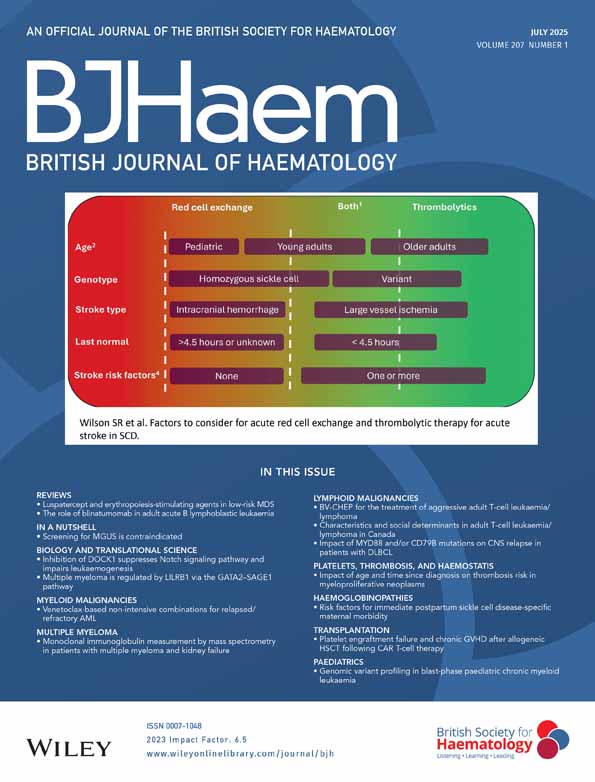Treatment of high-risk myelodysplastic syndromes with lymphoblastoid alpha interferon
Abstract
Seventeen patients with high-risk myelodysplastic syndromes (HR-MDS) received lymphoblastoid-interferon alpha (Ly-IFNα) for 3 months at escalating doses from 0.5 to 3 MU s.c. 3 times per week. Three patients stopped the treatment after 2 months because of cardiac failure (one patient) and cerebral haemorrhage (two patients); six had a partial response (PR) and continued Ly-IFNα; six were resistant and stopped Ly-IFNα; two evolved to acute myelogenous leukaemia (AML). Among the six partial responders, four achieved a complete response (CR) during subsequent Ly-IFNα treatment (CR duration 3, 4+, 15+ and 29 months) and two did not achieve any further improvement (PR duration 3 and 9 months). Two resistant patients had an unexpected clinical improvement soon after Ly-IFNα discontinuation and achieved a PR of 6+ and 14+ months respectively. No toxicity related to Ly-IFNα treatment was observed and no reduction of dosage was needed. In conclusion: (1) Ly-IFNα seems to be effective in some patients with HR-MDS; (2) the best treatment duration seems to be of at least 6 months.




